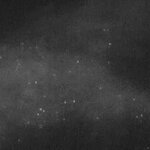Technology

Researchers at Carnegie Mellon University have devised the first computerized method that can analyze a single photograph and determine where in the world the image likely was taken. It's a feat made possible by searching through millions of GPS-tagged images in the Flickr online photo collection.
The IM2GPS algorithm developed by computer science graduate student James Hays and Alexei A. Efros, assistant professor of computer science and robotics, doesn't attempt to scan a photo for location clues, such as types of clothing, the language on street signs, or specific types of vegetation, as a…

Meningiomas are tumors of the brain and nervous system and they account for 20% of all brain tumors. Doctors have a problem discriminating between the four different subtypes of meningiomas due to three key problems:
* The work can be painstakingly slow requiring up to two hours of analysis and expert consideration of a full "slide" of information.
* The finest histopathologists (tumor specialists) can at times come up with completely contradictory findings based on slight variations in their method of analysis.
* Currently the slides that specialists examine contain a few million pixels…

A hernia is produced when the content of the abdominal cavity protrudes through a weakened natural orifice of the abdominal wall such as the inguinal canal, the umbilical area, the epigastrium or a previous incision in the abdomen such as from a surgical operation. The hernia manifests itself as a bulging lump since the internal lining of the abdomen protrudes in what is called a hernial sac that shrinks or grows depending on the effort exerted by the affected individual.
Hernias are more frequent in the groin or navel areas and in the area of an old surgical scar, and they never improve or…

Star Trek: The Next Generation's holodeck allowed crewmembers to walk through their childhood home, re-enact famous historical events or watch performances of famous plays. It was also a consistent source of story lines for Star Trek writers who had nothing left to fall back on, because the holodeck offered so many opportunities to just make things up that didn't rely on logic or the Star Trek universe's core mythology.
Of course, if leisure time permitted they could also learn new skills or execute training drills by simulating surgery, flight, and engine repairs in a truly realistic…

A new type of exercise equipment, first designed for actor Christopher Reeve, who played "Superman" in the 1977 film and its three sequels, can prevent serious lifestyle illnesses in paraplegic patients, according to a new exercise study.
In the study completed last year, patients who were paralyzed from the chest or waist down experienced an average increase in their oxygen uptake by 25 per cent and in their heart pumping volume by fully 37 per cent – after just eight weeks of training on the bike.
Patients who are unable to walk after a spinal injury have a poorer quality of life and…

Flat screen displays currently used in computer monitors, television sets and numerous other electronic devices are all built on a glass base. Most use liquid crystal devices (LCDs), which filter light from behind to form an image.
But the glass substrate makes LCD displays rigid and fragile, limiting their use. Now display manufacturers are working to develop a new generation of robust, flexible displays that can be curved to fit the shape of a product or even rolled up like a magazine. The question is, which of the technologies under development is the best?
Big industrial names such as…

Microscopic robots crafted to maneuver separately without any obvious guidance are now assembling into self-organized structures after years of continuing research led by a Duke University computer scientist.
Each microrobot is shaped something like a spatula but with dimensions measuring just microns, or millionths of a meter. They are almost 100 times smaller than any previous robotic designs of their kind and weigh even less, Donald added.
Formally known as microelectromechanical system (MEMS) microrobots, the devices are of suitable scale for Lilliputian tasks such as moving around the…

A major contribution to the long-term storage and access of data on mutation for genes and disease has been established with the launch of Human Genomics and Proteomics, the first database journal affiliated with a database, FINDbase: the National/Ethnic Mutation Database documenting frequencies of causative mutations leading to inherited disorders in various populations worldwide.
The first title to be launched through SAGE-Hindawi – the joint collaboration between SAGE and Hindawi Publishing Corporation, Human Genomics and Proteomics (HGP) is a peer-reviewed international open access…

By using a specialized microscope that only illuminates the cell’s surface, a virologist and a biophysicist at Rockefeller University have made history by becoming the first to see, in real time and in plain view, hundreds of thousands of molecules coming together in a living cell to form a single particle of the virus that has, in less than 25 years, claimed more than 25 million lives: HIV.
This work, may not only prove useful in developing treatments for the millions around the globe still living with the lethal virus but the technique created to image its assembly may also change the way…

New spray-on films developed by UC San Diego chemists will be the basis of portable devices that can quickly reveal trace amounts of nitrogen-based explosives.
Contaminated fingerprints leave dark shadows on the films, which glow blue under ultraviolet light. One of the films can distinguish between different classes of explosive chemicals, a property that could provide evidence to help solve a crime, or prevent one.
A recent episode of CSI: Miami featured the technology, which linked fingerprints left on a video camera to a bomb used in a bank heist, revealing the motive for the robbery. In…